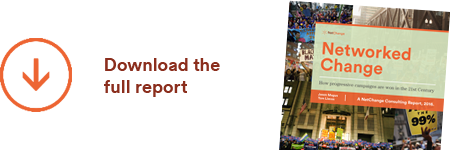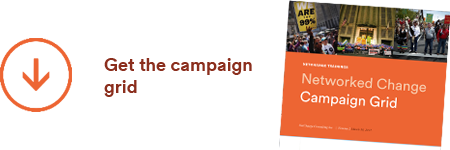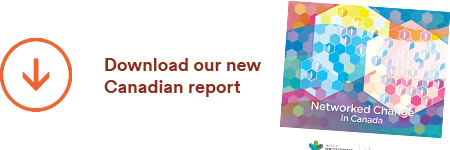Today’s digital teams have evolved far beyond merely being a publishing shop for the institution on the web. Today there are three primary, and strategically critical, functions of internal digital teams:
- Publishing – from making simple text pages, keeping important content up to date, to writing and creating rich media like photos, videos, and infographics that tell the stories of your work
- Mobilization (or engagement, if you’re not an advocacy org) – pushing content out to various supporter lists and social media, content promotion, as well as community listening, volunteer management, and organizing
- Strategic consultancy – working hand in hand with various internal clients to figure out the most effective way to publish and promote their work, while also leading larger institutional priorities
It starts with mastering content
In the work we do with teams, most are just barely getting the resources they need to truly lead on the first pillar. Managing content across what are often the most visited communications channels institutions have today is still very much a challenge, just keeping up with the volume and pace of requests is challenging. But to truly lead typically requires a role for a senior content editor, who has an overall vision and content strategy, and does a lot of writing for a lot of channels. Leading here also means learning how to edit videos, make simple graphics, and manage freelancers and outside agencies to deliver more sophisticated creative content today’s audiences expect.
Promotion, engagement, and community aren’t easy
The world of online mobilization is still quite new, unless you’re a politically oriented organization that’s done real world organizing and events. Teams that do mobilization tend to have more of a skillset around campaigning, sophisticated use of social media, managing databases to find high capacity volunteers, running off-line events, and a lot of custom content and relationship management with those super volunteers or activists to support their leadership.
There’s also a big world of “content promotion” that would fall into this bucket – the strategic use of Google AdWords Grants, list buying, blogger outreach, and other creative means of promoting your work and getting it seen and shared. Finally, if you are oriented towards community, listening to, responding, and growing your community fits here. While many organizations still think online mobilization is “push that e-alert to our list!”, doing engagement well is by its nature much more subtle and two way. It’s also probably the most exciting opportunity institutions face to truly change the game on their issues and their tired business models.
Strategic thinking and teaching your org to fish
Most teams we see are set up to do one of these well, maybe both if you’re lucky. But in institutions struggling to innovate and maintain their relevance in a busy, complex world, the third pillar could be the most important. The strongest digital teams serve as mini-internal consultancies to their institution: growing capacity for digital thinking, helping understand the needs of campaigners, program heads, researchers/policy wonks, volunteer coordinators and other important internal leaders, and not just listening and executing their ideas but truly shaping them towards the most appropriate and viable online options for their audiences.
This is probably the hardest role to play, as of course everyone in the organization wants their work to be promoted and successful. Worse yet, everyone thinks they’re an internet strategist. But in a world of audience overwhelm, cluttered websites, and overloaded online teams, doing strategy well requires a mandate to push back on poor ideas that come your way, skills to make them better, and an ability to focus on doing a few things well rather than a zillion things mediocre. Focus also allows teams to be proactive, finding the best opportunities to grow your movement online locked up inside the institution, and making them happen.
Playing this role also, clearly, requires that the leadership of the digital group are actually strategic thinkers, strong communicators, and excellent relationship managers, in addition to being technically skilled.
Jason Mogus is Communicopia’s principal consultant and is the founder of Web of Change. He has been developing digital strategies for social change organizations for over 15 years. You can follow him at @mogusmoves.
The best way of turning your team into a high value consultancy – and importantly being perceived that way by internal leaders – is to position your group for leadership, which we cover in a recent article on the importance of positioning.
So how well does your digital team measure up on these three pillars? Are you required to do each of these things? Are you resourced to deliver well on all three? If not I hope this helps you make the case to your higher-ups why you need more help, and the strategic value it can unlock for your institution.










